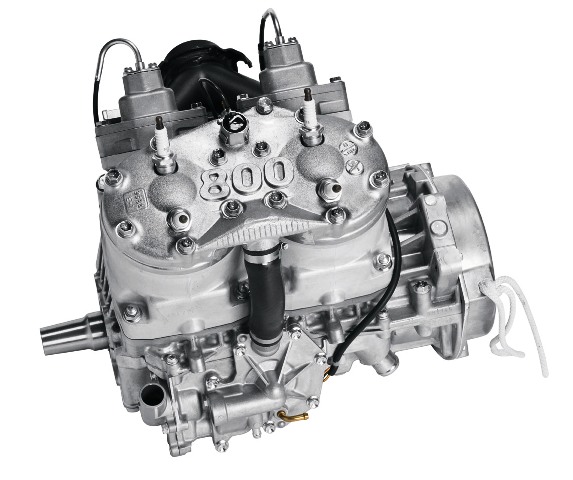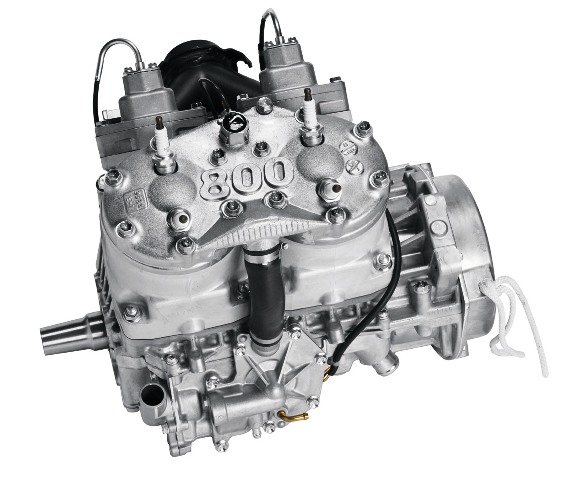
When Arctic Cat coaxed 160-plus hp out of its 800 laydown twin via new exhaust, pistons, cylinder porting, EFI calibration, ignition timing, APV valves and the good ol’ Greg Spaulding voodoo, it prompted the strong recommendation that owners use 91-octane fuel.
I say “strong recommendation” because 91 octane is NOT required in order for this engine to function. But without 91 octane, it likely won’t function at its intended peak performance.
The reason: detonation.
Detonation (aka: knock) can be the result of several factors, including insufficient octane, too-high operating temperatures (such as poor snow situations where the heat exchangers don’t get enough cooling) and poor fuel quality.
During the H.O. upgrade, the 800 engine also got an upgraded knock sensor. When the 800 H.O. detects knock/detonation, it automatically retards ignition timing in stages – up to 3 degrees –to accommodate and compensate for whatever factor is producing it.
If retarding the timing 3 degrees doesn’t prevent the detonation, the engine goes into self-preservation mode (SPM) to prevent burn-down.
SPM limits engine speed to 7,900 rpm (as compared to the 8,300-8,350 rpm in normal operation) and delivers a richer fuel mixture. When it’s in SPM, the digital instrument gauge flashes the word “Octane.” The engine stays in SPM until the instigating factor is remedied AND the engine has been shut off and restarted.
While a 7,900 rpm limit and richer fuel mixture are significant downgrades to the 800 H.O.’s performance, it’s far from a measly “limp home” mode. Even in SPM, the engine is producing somewhere in the neighborhood of 130 hp which, last time I checked, delivers a worthwhile riding experience.
So dispel the idea that the 91-octane “requirement” means you can’t run 87 octane in the event you’re running low on fuel and the only stuff available is low-grade.
Also worth mentioning: the higher the elevation, the likelihood for detonation decreases. At elevations of 5,000 feet and higher, you can probably use 87 octane without experiencing detonation.
Got a new 800 H.O. coming your way this season? If so, I’d like to hear about your experiences here and/or on the ArcticInsider forum.



what if u run higher octan fuel say like 106?
It would be a waste if you didn’t have a lot more modifications to the engine say like a high compression ratio or turbo..
I have to say great article. This will set of of people straight
about what fuel they can run.
That deto protection system sounds real advanced, another reason why i want 800ho in my 05 snopro 440.
excellent article John, what do we know about the dampener ring bolted on the inside of the primary on the new 800HO. it reminds me of the one my 05′ F7 had. can it be removed without engine damage? benefits? they pulled weight out of the crank but added it on the clutch, why? also they changed the pri-sec offset on the 10’s, now we use the same offset tool as the f chassis, hmm? this site rocks, thanks for your efforts. added to my favorites!
i have a question. i have a crossfire 800 snopro. i also have access to 100 low lead aviation fuel for free. do you see any problems running this in it? i run it in my weed whacker , mower and golf cart with no problems.